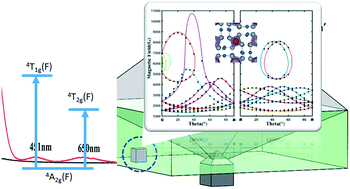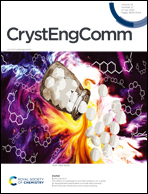Electron paramagnetic resonance spectroscopy and first-principles calculations of Cr3+ doped KDP crystals
Abstract
The characteristics of potassium dihydrogen phosphate (KDP) crystals with Cr(NO3)3 doping at the ∼10 ppm level were studied using the ultraviolet-visible (UV-vis) absorption spectrum, electron paramagnetic resonance spectroscopy (EPR), and first-principles calculations. According to the UV-vis absorption spectrum, there are three additional absorption peaks in the 200–800 nm regions on KDP:Cr(NO3)3 crystals compared with undoped KDP crystals. The angular-dependence EPR spectra of a Cr3+ paramagnetic centre of the KDP:Cr(NO3)3 crystal were obtained at room temperature. The spin Hamiltonian parameters (g and D tensors) of the Cr3+ centre were extracted using a least-squares fitting code. The first-principles calculations show that the formation energy is the lowest when the Cr atom substitutes the K atom. In addition, the d–d orbital electron transition Cr3+ ion may contribute to the two absorption peaks (451 nm and 650 nm) in the UV-vis absorption spectrum. Based on the experiments and theoretical calculations, it was inferred that in the KDP:Cr(NO3)3 crystal, Cr atoms occupy an average position of K atoms, and the charge compensation is reached through two adjacent H vacancies to meet the electrical neutrality requirement.



 Please wait while we load your content...
Please wait while we load your content...